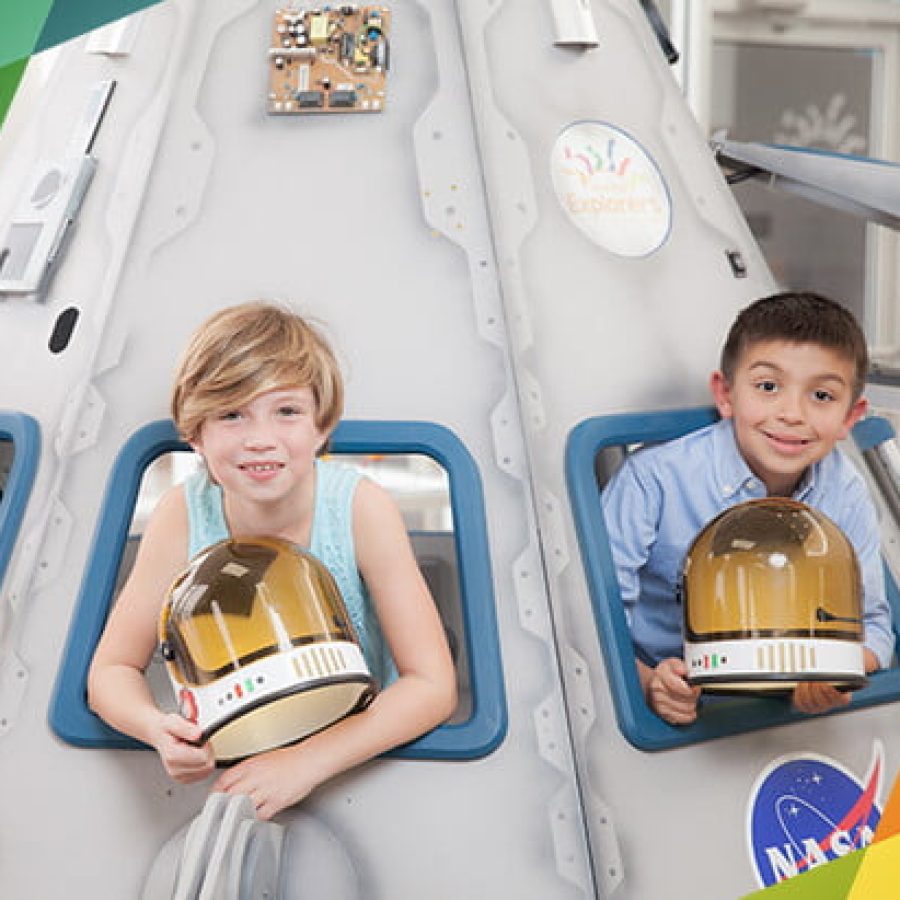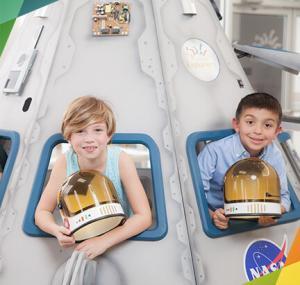STEM is more than just a grouping of subject areas. It is a movement to develop the deep mathematical and scientific underpinnings students need to be competitive in the 21st-century workforce.
But this movement goes far beyond preparing students for specific jobs. STEM develops a set of thinking, reasoning, teamwork, investigative, and creative skills that students can use in all areas of their lives. STEM isn’t a standalone class—it’s a way to intentionally incorporate different subjects across an existing curriculum.
Here’s a quick rundown of the STEM acronym:
- Science: The study of the natural world.
- Technology: One surprise—the STEM definition for technology includes any product made by humans to meet a want or need. (So much for all technology being digital.) A chair is technology; so is a pencil. Any product kids create to solve a problem can be regarded as technology.
- Engineering: The design process kids use to solve problems.
- Math: The language of numbers, shapes, and quantities that seems so irrelevant to many students.
STEM lessons often seem similar to science lessons and experiments, and in some ways, they are. After all, genuine science experiences are hands-on and inquiry-based. But if you look at the basics of an “ideal” STEM lesson, you’ll see some substantial differences.
Here are six characteristics of a great STEM lesson. I hope you’ll use these guidelines to collaborate with other teachers and create lessons that apply technology to what students are learning in science and math (and other subjects as well).
1. STEM lessons focus on real-world issues and problems. In STEM lessons, students address real social, economic, and environmental problems and seek solutions. My biggest “aha” STEM moment came when I moved to a new position and faced a class of science students who had given up on school. I had the class identify a real-world problem right there on campus, and suddenly we found ourselves head over heels in a STEM project—before the familiar acronym had even burst onto the scene. See Real World STEM Problems for some suggestions for projects students might focus on.
2. STEM lessons are guided by the engineering design process. The EDP provides a flexible process that takes students from identifying a problem—or a design challenge—to creating and developing a solution. If you search for “engineering design process images” online, you’ll find many charts to guide you, but most have the same basic steps. In this process, students define problems, conduct background research, develop multiple ideas for solutions, develop and create a prototype, and then test, evaluate, and redesign them. This sounds a little like the scientific method—but during the EDP, teams of students try their own research-based ideas, take different approaches, make mistakes, accept and learn from them, and try again. Their focus is on developing solutions.
3. STEM lessons immerse students in hands-on inquiry and open-ended exploration. In STEM lessons, the path to learning is open ended, within constraints. (Constraints generally involve things like available materials.) The students’ work is hands-on and collaborative, and decisions about solutions are student-generated. Students communicate to share ideas and redesign their prototypes as needed. They control their own ideas and design their own investigations.
4. STEM lessons involve students in productive teamwork. Helping students work together as a productive team is never an easy job. It becomes exponentially easier if all STEM teachers at a school work together to implement teamwork, using the same language, procedures, and expectations for students. If you want a jumpstart on building specific student-teamwork skills, contact me and I’ll send you a draft of a student teamwork document.
5. STEM lessons apply rigorous math and science content your students are learning. In your STEM lessons, you should purposely connect and integrate content from math and science courses. Plan to collaborate with other math and/or science teachers to gain insight into how course objectives can be interwoven in a given lesson. Students can then begin to see that science and math are not isolated subjects, but work together to solve problems. This adds relevance to their math and science learning. In STEM, students also use technology in appropriate ways and design their own products (also technologies).
Best case scenario: Involve an art teacher as well. Art plays a critical role in product design. Teams will want their products to be attractive, appealing, and marketable. When the arts are added, the STEM acronym becomes STEAM.
6. STEM lessons allow for multiple right answers and reframe failure as a necessary part of learning. Sometimes I designed my science labs so that all teams would replicate the same results or verify or refute a hypothesis. Students were studying specific science content and the whole idea was to provide insight into cause and effect by manipulating variables.
STEM classes, by contrast, always provide opportunity for multiple right answers and approaches. The STEM environment offers rich possibilities for creative solutions. When designing and testing prototypes, teams may flounder and fail to solve the problem. That’s okay. They are expected to learn from what went wrong, and try again. Failure is considered a positive step on the way to discovering and designing solutions.
Creating STEM lessons
So where can you find quality STEM lessons? An online search of “STEM lessons” will yield plenty of results. A word of caution, however: Not everything that claims to be STEM is actually STEM. If it doesn’t meet the criteria described above, you may want to move on.
I generally start with the following sites to jumpstart my thinking when I plan a STEM lesson: Design Squad Nation, NASA STEM lesson, National Geographic Education, STEMWorks, TeachEngineering, and The Air Force Collaboratory. (Please add your own favorite sites in the comments section.)
Can’t find any lessons you like? Look at your course objectives, come up with a real world challenge, and write your own lesson. Check out my blog posts Perfect Stem Lessons and 12 Steps to Great STEM Lessons for some “how to” ideas. You can also get a free “starter lesson” to introduce your students to the engineering design process by contacting Melissa Dean. (Put “Free Launcher Request” in the subject line.)
For the ultimate resource, I invite all of you—whether or not you are STEM teachers—to join the Center for Teaching Quality’s Collaboratory, a professional and safe virtual network to post your ideas and questions about STEM (and other topics of interest). We’d love to share our knowledge and experiences with you.
For those of you in the trenches, have fun creating your lessons—and thank you for being STEM teachers.
(Source: edweek.org)



